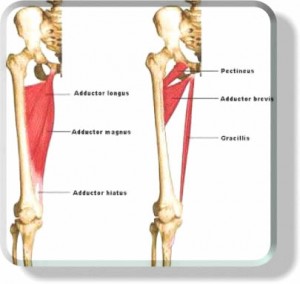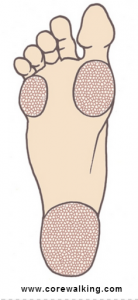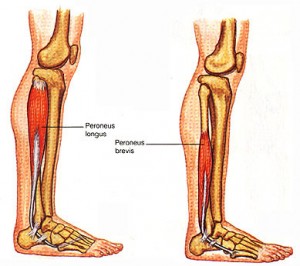Weak Inner Thighs And The Fibularis Muscles
Weak inner thighs are a major problem for large swaths of the population.
And the main problem with having weak inner thighs is that if you suffer from this unfortunate condition you will bear weight through the outside of the body rather through the middle, or core.
This means the muscles of the outer calf, the fibularis (formerly known as the peroneals) will suffer as well
The Inner Thigh Muscles
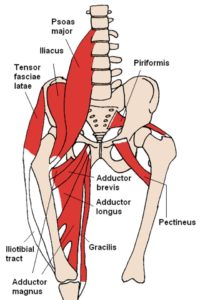

The inner thigh muscles are called adductors.
The adductors originate on the pubic bones and the hip bone and insert mainly on the back half of the inside of the femur (leg bone).
They are a group of five muscles— adductor longus, adductor brevis, adductor magnus, gracilis, and pectineus.
The main function of these muscles produces adduction of the thigh at the hip joint. Adduction is when a muscle or body part is pulled closer or towards the midline of the body.
Adductor magnus is the largest of these muscles.
It is a triangular muscle— triangular muscles are movers— that attaches to the pubis, the ischium of the hip, and the ischial tuberosity (sit bone).
Adductor magnus both adducts and flexes the hip and aids in the extension of the hip where it connects to the sit bone.
The adductor longus is also a triangular muscle. Its main function is to adduct the thigh at the hip joint. It is also involved in the flexion of the extended thigh, as well as the extension of the flexed thigh.
It also has a small role in the internal rotation of the thigh. This makes it an important muscle in my book as that internal rotation helps with the proper alignment of the psoas muscle.
Adductor brevis is another triangular muscle and the shortest of the adductors, as its name suggests. It is situated between the magnus and longus.
The main function of the adductor brevis, like all of these muscles, is adduction. It also has a minor muscle role in the flexion of the hip and, as opposed to the adductor longus, may be involved in the external rotation.
There are two other adductors, gracilis, and pectineus.
Gracilis is the innermost and most superficial muscle of the adductors. It crosses two joints— the hip and the knee. It is the only adductor to do so connecting to the tibia of the shin.
It is the weakest adductor of the thigh but acts in flexion and internal rotation of the leg at the knee joint.
The pectineus muscle is a short and quadrangular muscle extending from the pubis to the femur.
The main function of the pectineus muscle is to flex and adduct the thigh at the hip.
The Fibularis Muscles

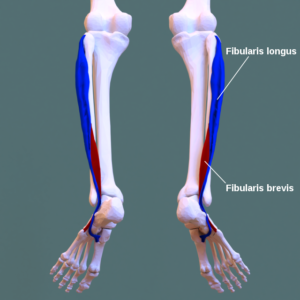
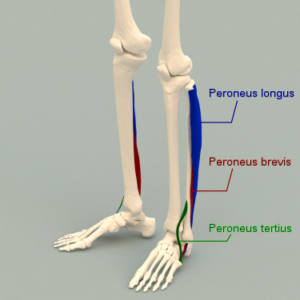
Our fibularis muscle group is composed of three muscles: fibularis longus, fibularis brevis, and fibularis tertius.
To be honest the tertius rarely enters the discussion. It lifts the sole of the foot up and out (eversion), and helps to pull the foot up (dorsiflexion).
Fibularis longus and fibularis brevis, on the other hand, are super important longus and brevis are key muscles.
These two muscles are responsible for activating the outer and transverse arches of the foot.
They also aid in plantar flexion and eversion.
Fibularis longus originated on the head of the fibula and inserts on the inner cuneiform bone and first metatarsal.
It wraps around the ankle bone before making its way to the foot creating a pulley action to hoist up the transverse arch.
Fibularis brevis originates on the middle of the fibular fibula and inserts on the 5th metatarsal bone activating the outer arch of the foot.
While there are four muscles involved in hoisting up and supporting the main inner arch of the foot, these two muscles alone are responsible for the transverse and longitudinal (outer) arches of the foot.
The Balance of the Inside and Outside of the Leg
When we are standing up straight it would be nice if our feet were planted evenly on the floor.
An evenly planted foot means that the weight is spread equally across the ball of the foot and the heel.
The very middle of the foot, and the inner arch, aren’t meant to make contact with the floor but the rest of the foot should.
Most people I meet and work with have feet that tend to bear weight towards the outside.
If this is the position that you find yourself in the odds are you have an imbalance between the inner and outer thighs.
And it is likely that other muscle groups will suffer as well.
Many people with weak inner thighs also have tight dysfunctional peroneal muscles.
If you bear weight towards the outside of the foot you can assume that the outside of the shin where the peroneal muscles attach are also pulled to the outside.
I often teach basic calf raises in my yoga classes and invariably students have trouble keeping the inner foot grounded as the heel lifts.
This is an indication that the peroneal muscles are pulling your shins out to the side.
If that is the case, your inner thighs which are meant to keep the legs together (adduct) when the heels come up, will be pulled in the direction of the outer shins and outer foot.
Learn to use your peroneal muscles as intended and it will help in your quest to develop your weak inner thighs into strong happy inner thighs.
It might take a while to make these changes but in the long run, your legs, as well as your upper body and spine will benefit greatly.

